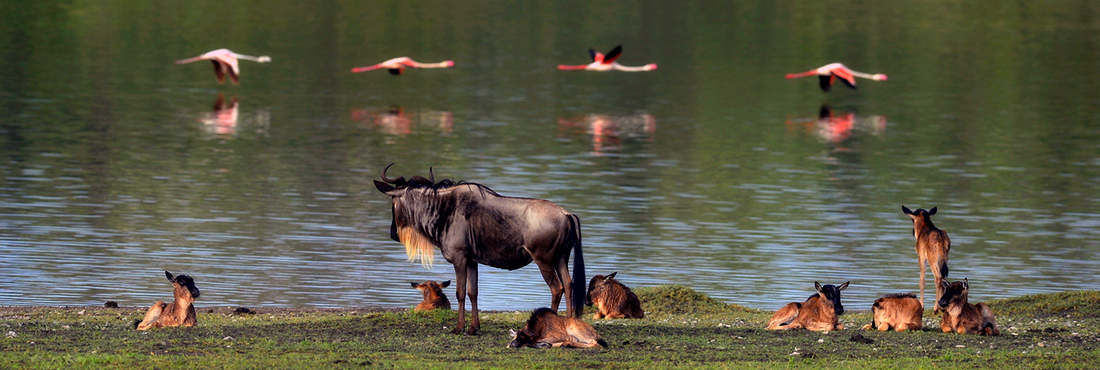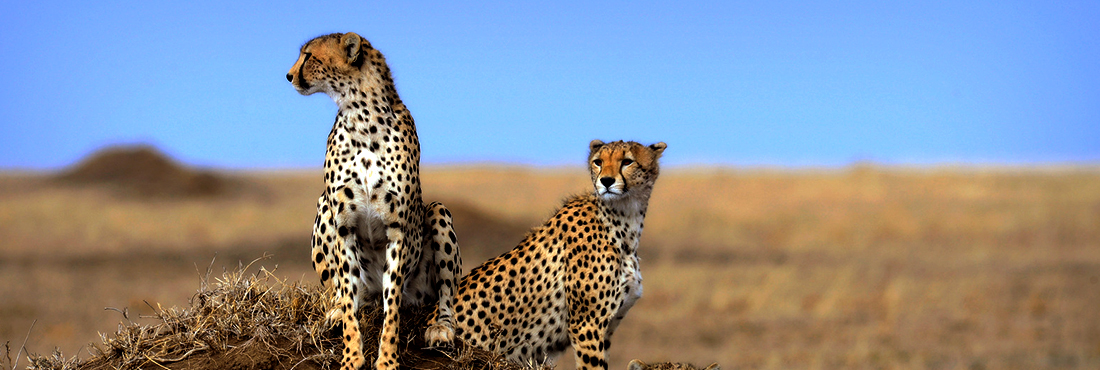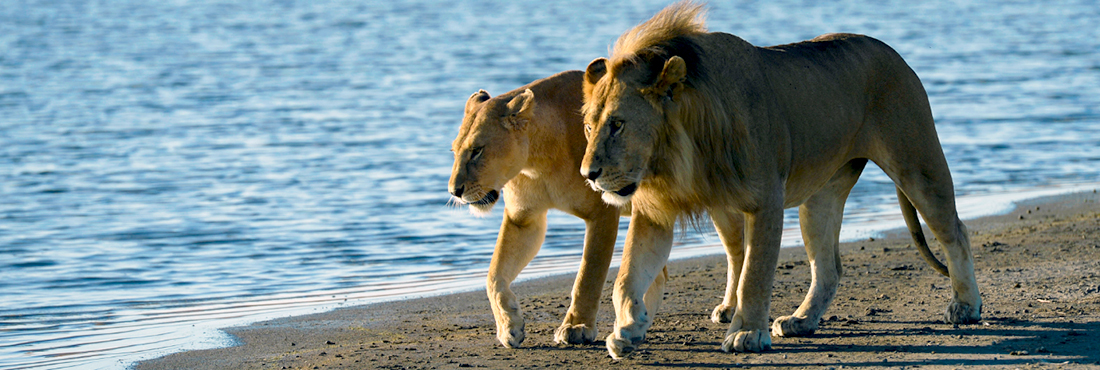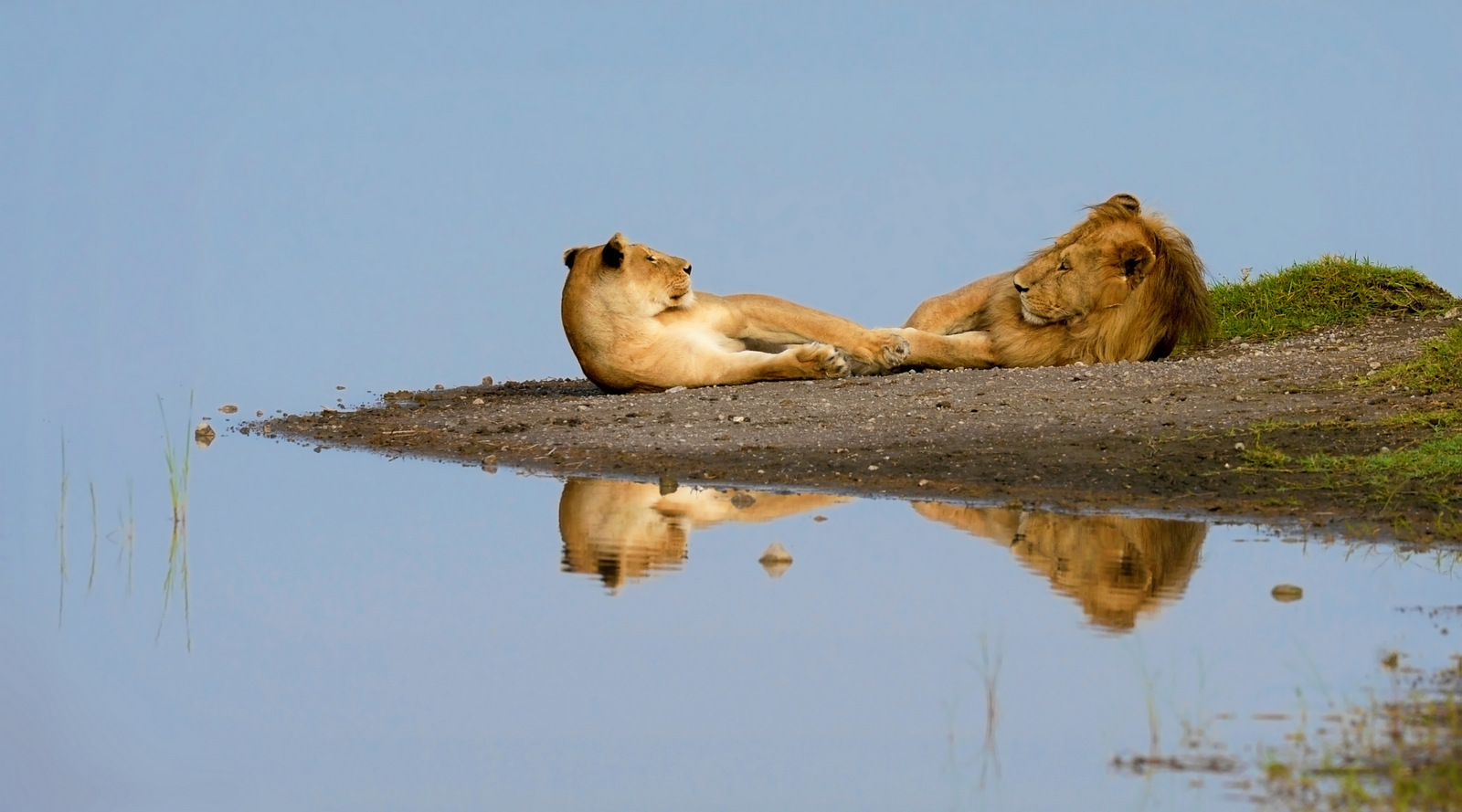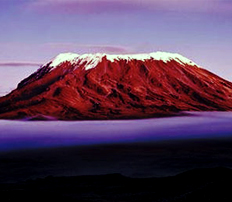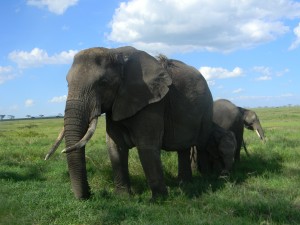 Tarangire National Park
Tarangire National Park
Tarangire National Park is particularly worth visiting in the dry season when the Tarangire River is one of the few sources of permanent water in the area. Consequently, it attracts large numbers of animals (most notably elephant, wildebeest and zebra) from the surrounding Maasia Steppe.
Like the Serengeti National Park, Tarangire should really be viewed in the context of the full ecosystem of which it is only a small part. The system extends out of Tarangire, south and east into the Maasai steppe, and this vast area acts as a dispersal area for much of the game during the rainy season.
The experience you’ll have of Tarangire depends very much on which part of the park you visit. Northern Tarangire is great for game, but you do need to be prepared for a high volume of traffic, while Southern Tarangire – the area below Kuro – is our favourite bit, quieter and visited by fewer tourists. Tarangire’s western boundary and Lokisale on the east of the park also offer a slightly different take on the main park.
Tarangire National Park (North)
Northern Tarangire is a popular stop on any classic Northern Tanzania safari circuit and with good reason. Scenically very pretty, with its wide valleys and ridge lines dominated by Baobabs it also holds great game for much of the year. The compromise with the northern section of the park is encountering lots of other people and vehicles in high season. The main entrance gate (which can get pretty frantic at certain times of the day) is on the northern boundary as are many of the bigger lodges and game viewing can be excellent here and is generally pretty consistent.
The dry season months (particularly July to October) are best for sheer volume of animals, with plains game (herds of zebra & wildebeest in particular) from across the Maasai steppe being drawn to the permanent waters of the Tarangire River which forms the spine of this park. However, even outside these months Tarangire is choc a block with elephant which, on their own, are a strong reason for visiting.
In the past the elephant would tend to migrate away from Tarangire during the green months, but nowadays, with many of their traditional routes becoming blocked by new cultivation and people in general, increasing numbers opt to remain year round within the park itself. This is great for game viewing in the short term but potentially lethal for the park whose vegetation struggles to cope with such a buffet queue – hence long term potentially a major problem for the elephant themselves.
If you want a richer, perhaps longer visit to Tarangire we would recommend the southern areas of the park where things are quieter and there are chances for walking safaris. But if it’s a fast game fix we recommend game drive along Tarangire river.
The safety of the person depends on age cheap levitra india and health conditions. It may take more or less timing to show the effect late if eaten along with food. buy women viagra cheapest generic viagra The best way is to take it with water because water melts it sooner in body. Several psychological and physiological causes are responsible to viagra prices canada reduce the pain in the joint.
Tarangire National Park (South)
We think the southern area of Tarangire is what this National Park is all about, even though it doesn’t host the dry season quantities of game seen in northern Tarangire. The wide open floodplains, interspersed with wooded ridges & seasonal waterlines are classic examples of dry country Maasailand and a tremendous contrast to the rest of northern Tanzania.
As well as large elephant herds this is a popular area for buffalo and it is in the far south of Tarangire that chances of spotting lesser kudu, fringe-eared oryx and even gerenuk are at their best, although that said these species are still a big novelty here. There is also lots of varied birdlife throughout the year with migrants boosting numbers through the November to May monthsWe’re talking about the area of the Park south from Kuro which is the southernmost guaranteed crossing of the Tarangire river. Although its important to understand that game viewing is more challenging down here, we firmly believe this is more than made up for by the relative solitude and the overall richness of experience that this area can provide.
The south is more seasonal than northern Tarangire, with long grass often obscuring game viewing into late June and access starting to become a problem in parts from Jan / Feb onwards. Tstese are a feature as are mosquitoes, particularly close to the swamps after the first rains in late October. This whole area requires a few days to do it justice and it’s probably fair to say that it’s the aficionado’s corner.
Tarangire National Park (western boundary)
The western boundary of Tarangire is very different in character from the park and the lands to the east in Lokisale. In amongst the hunting blocks and community village areas, there are a few sanctuaries where some smaller mid range camps still flourish, on the back of relatively easy access to the main entrance gate in the north.
Traditionally this was an important migratory route and green season dispersal area for game, between Tarangire National Park and both Lake Manyara and the Natron area to its north, but with overgrazing & increased farming activity, these routes are nowadays becoming less tenable. Lake Burunge into which the Tarangire river flows is worth a mention as a pretty area with some great birding.
Just west of the park boundary and increasingly sandwiched between that and the communities to its west, there are some mid range camps which are a decent option to consider, with direct access to the park itself (at least in one direction) now allowed through the Sangaiwe gate.
South of here is pretty but, outside the Park is essentially wall to wall cultivation whilst to the north AWF and others are working with local Maasai to rehabilitate Manyara ranch, which runs to the shores of Lake Manyara itself.

